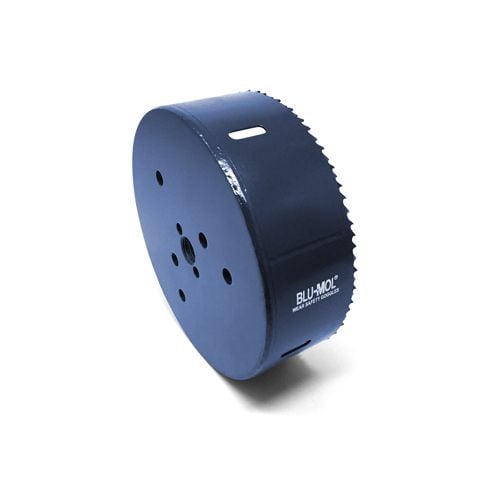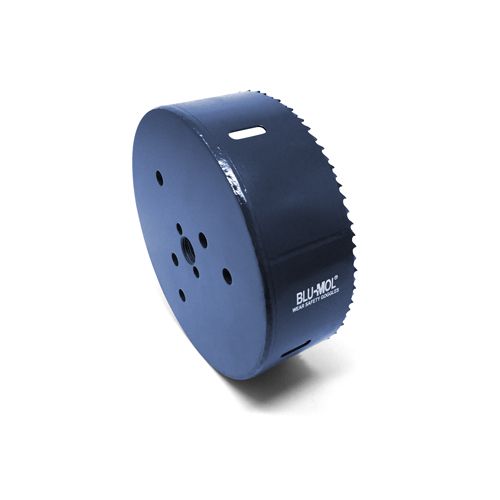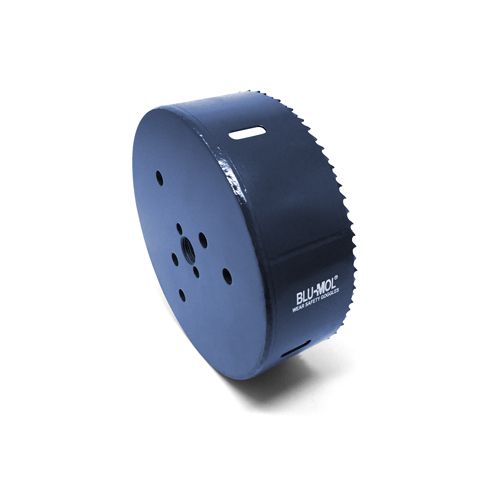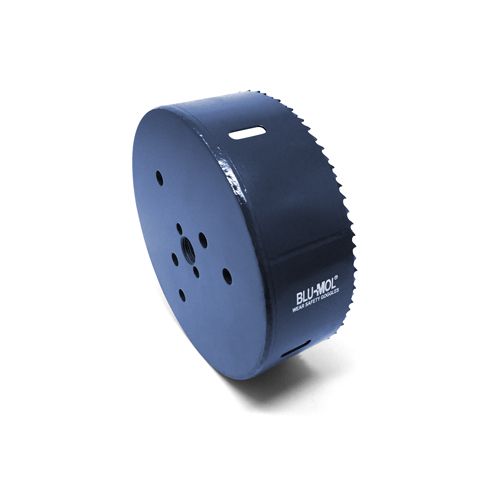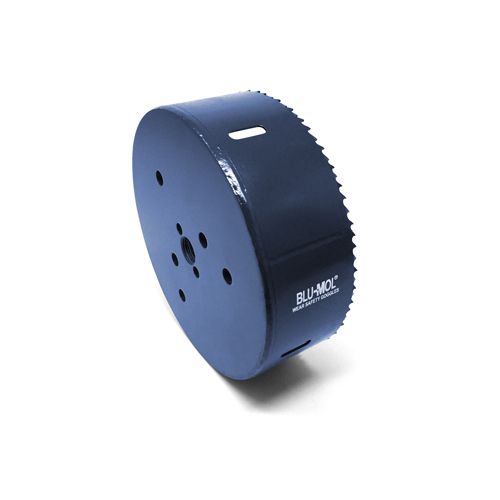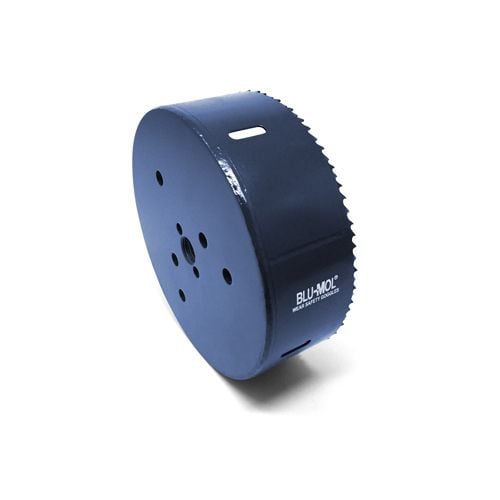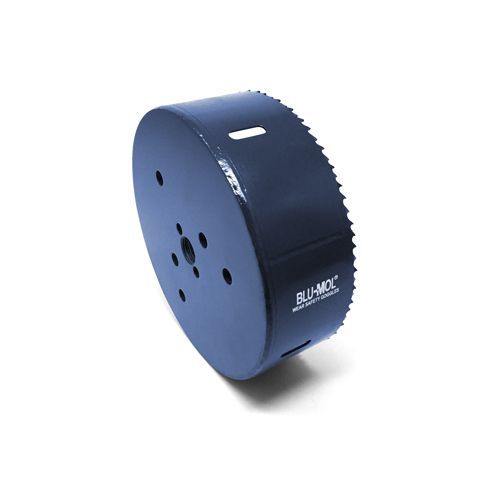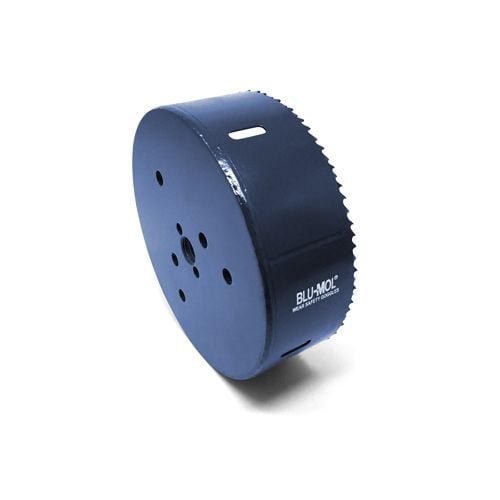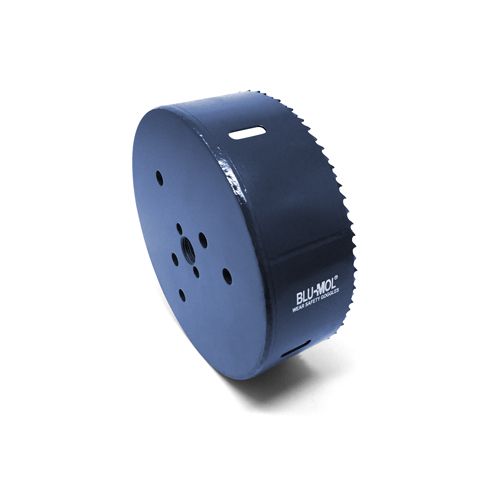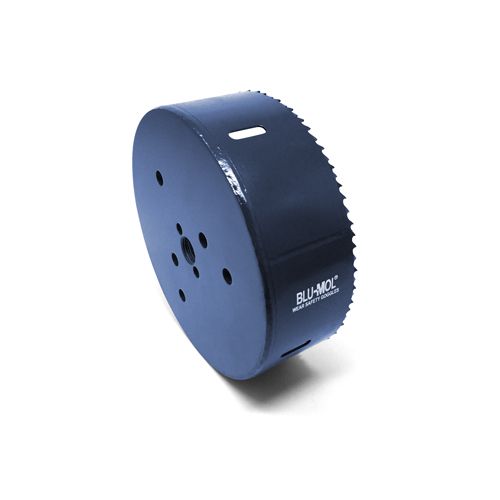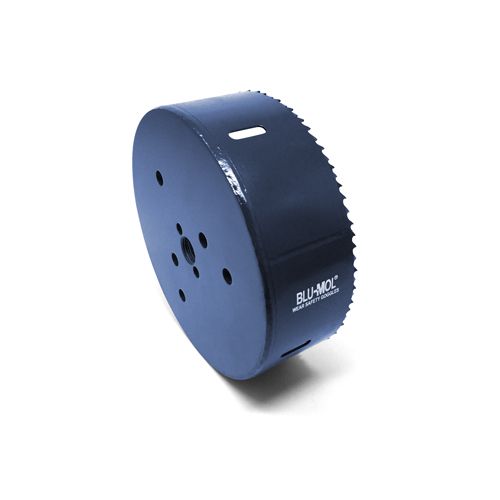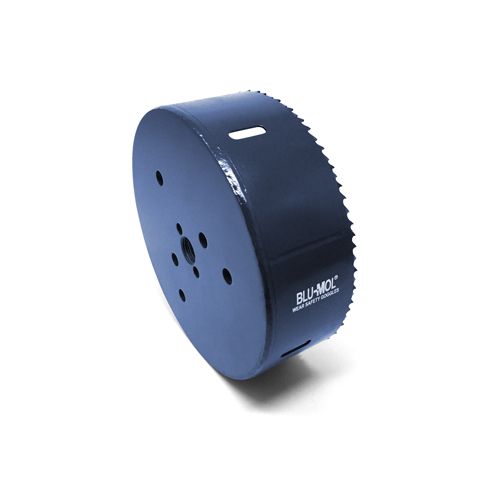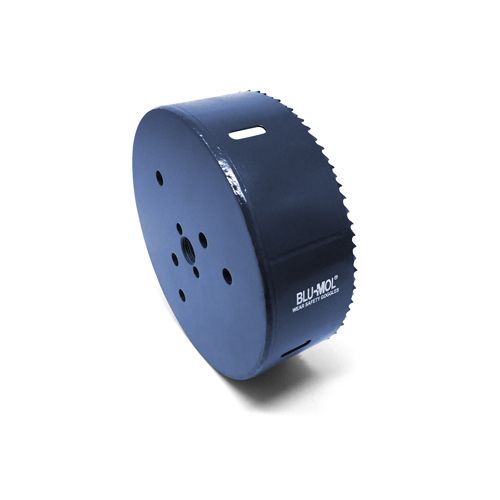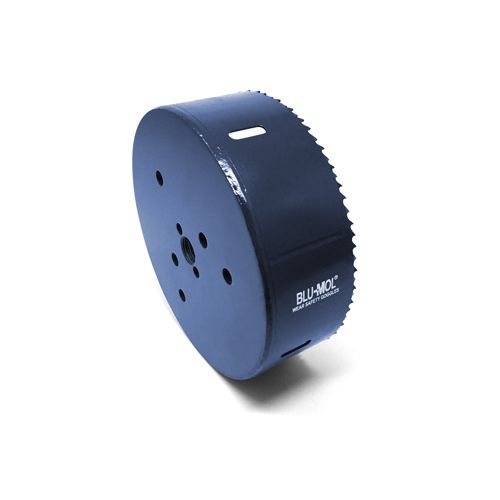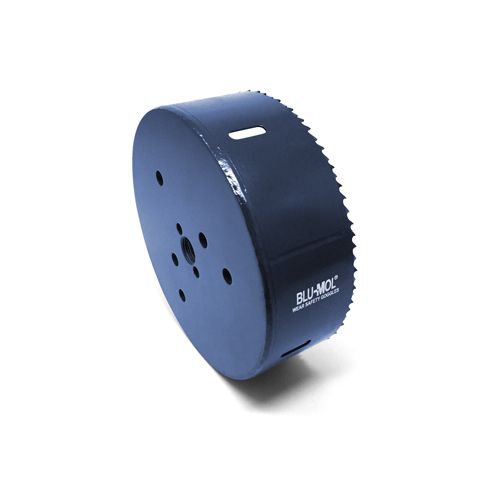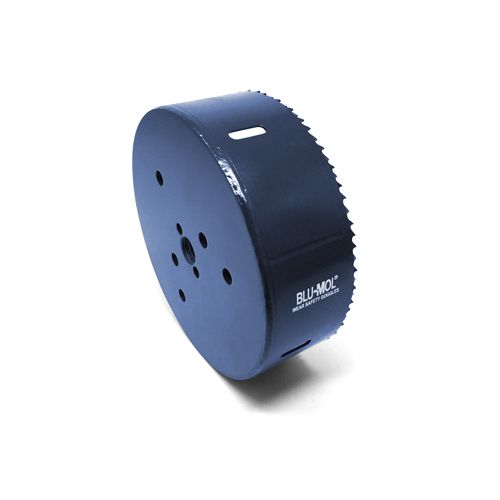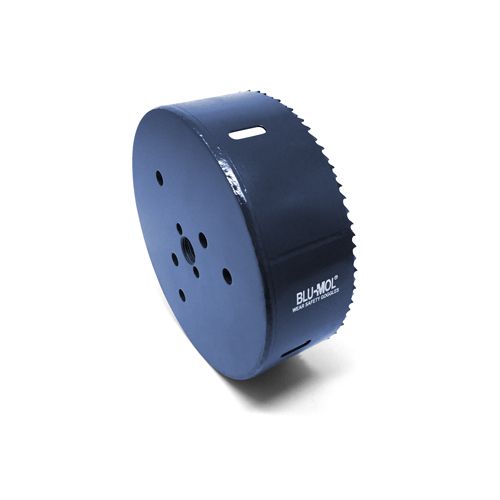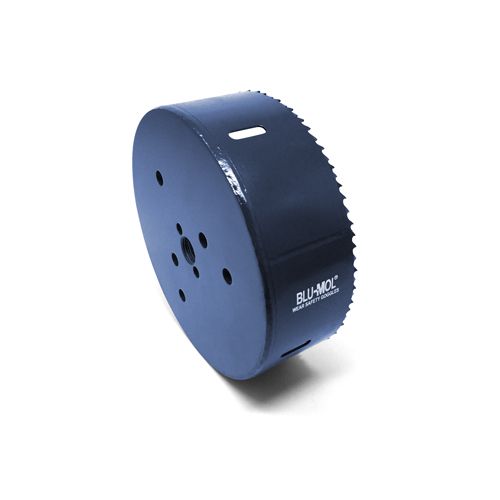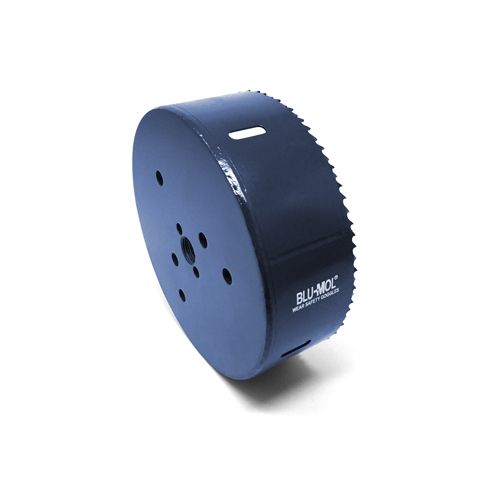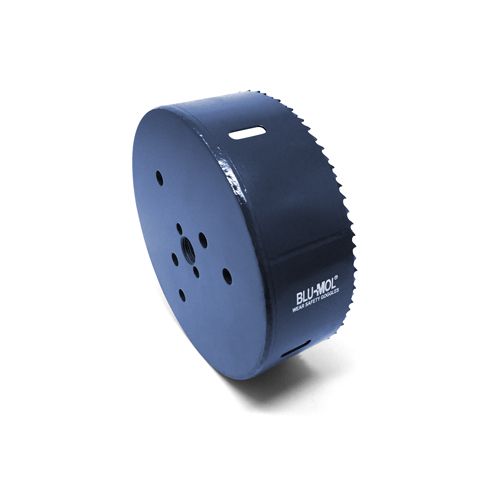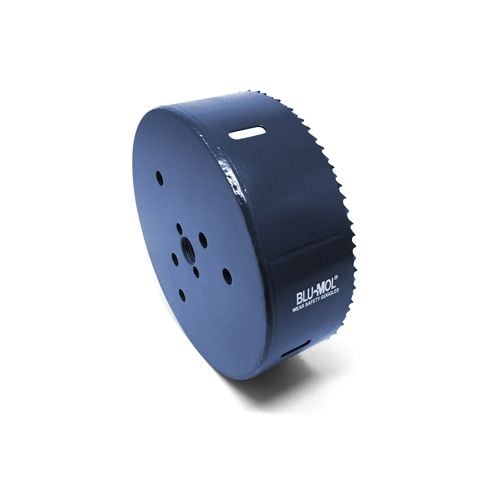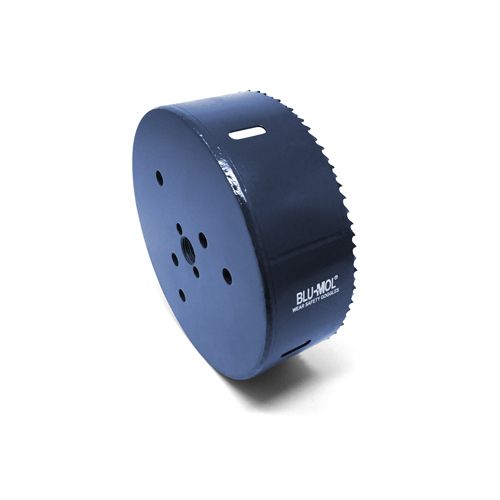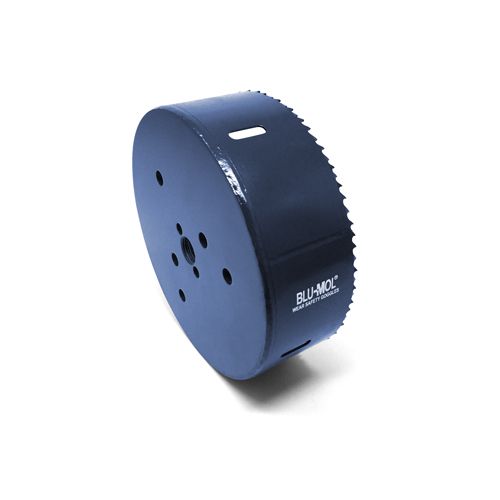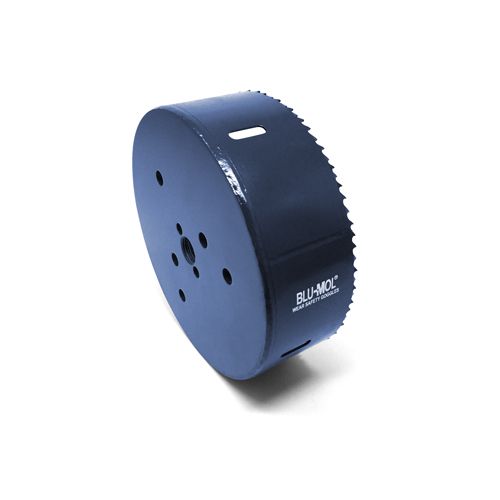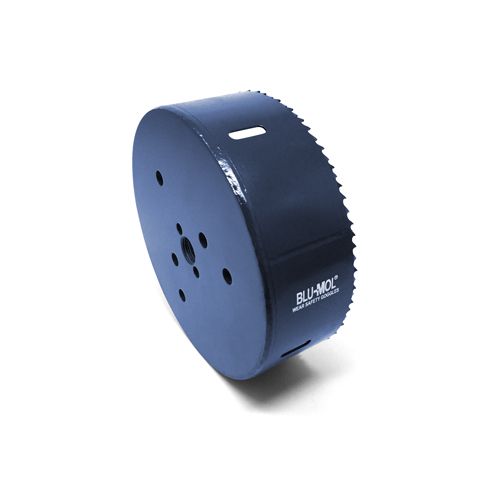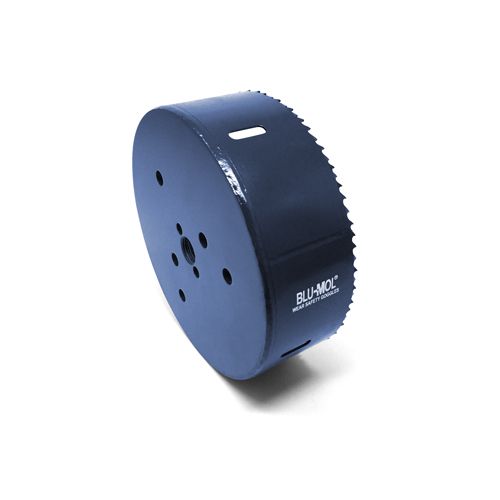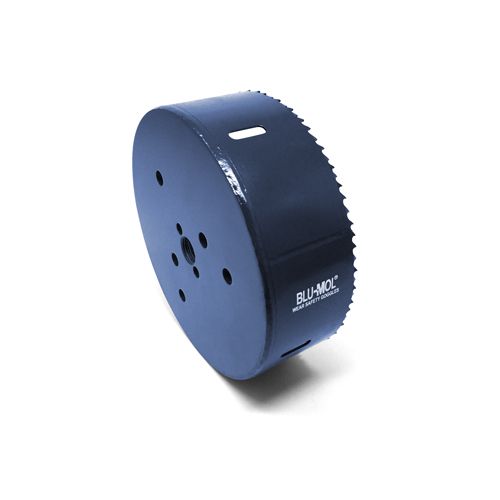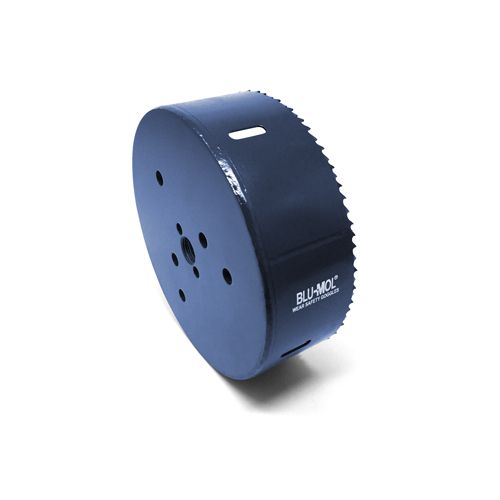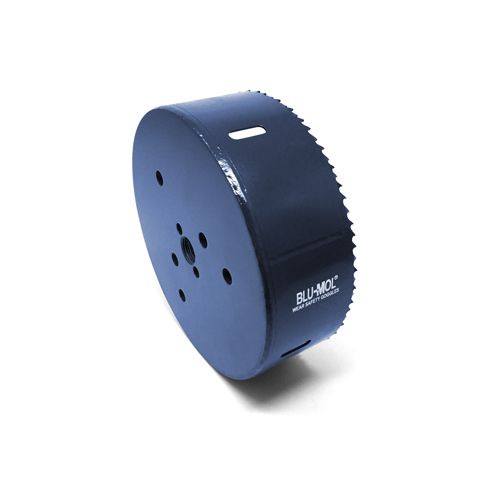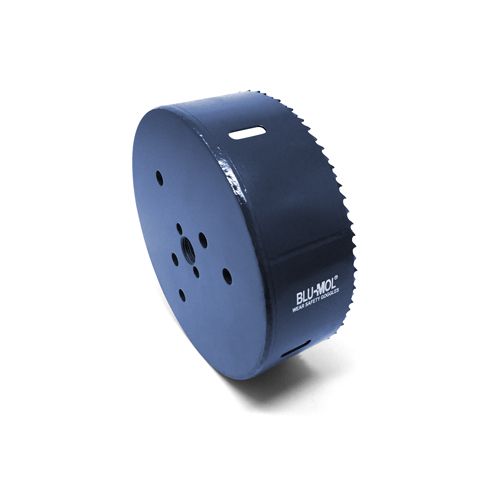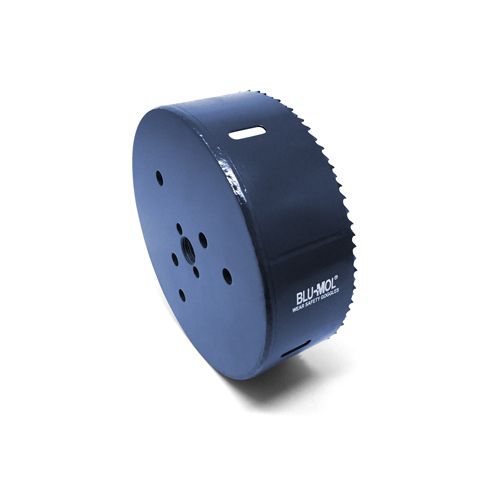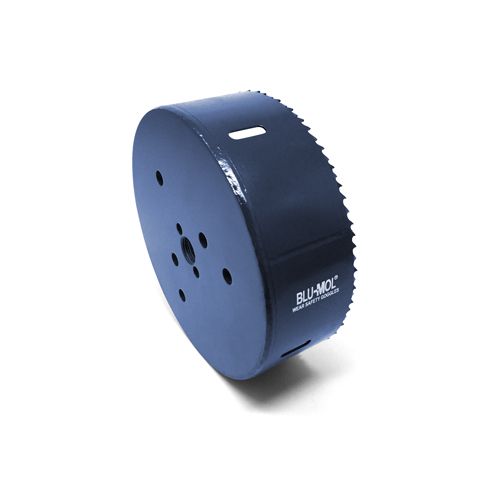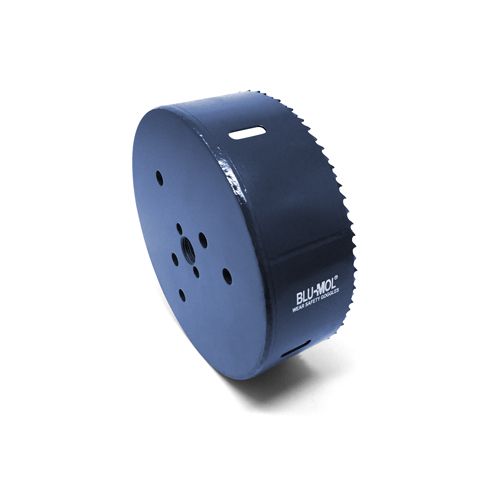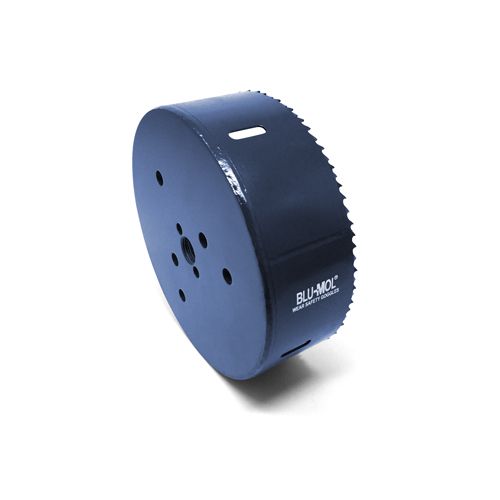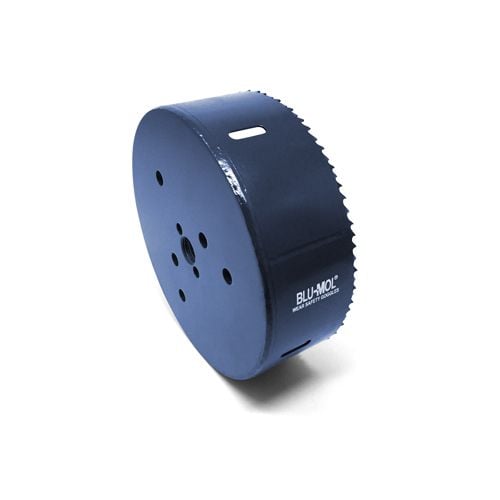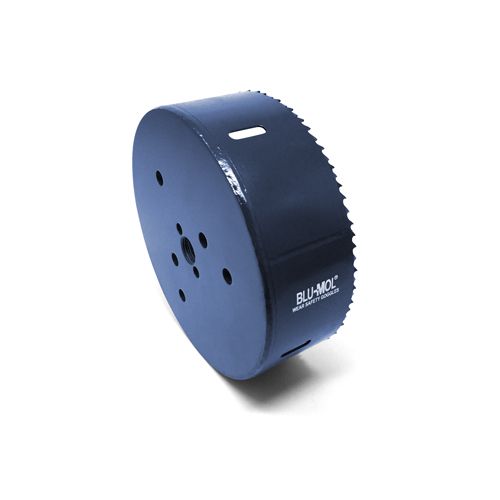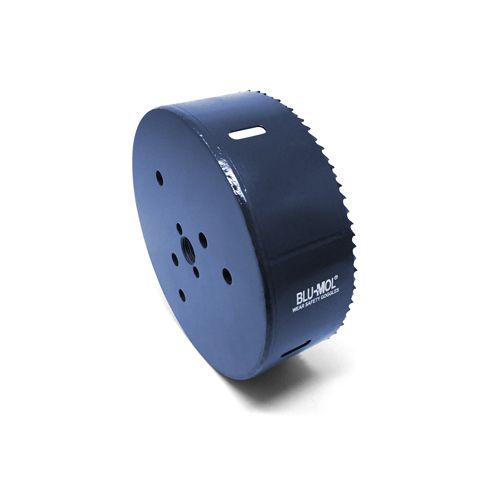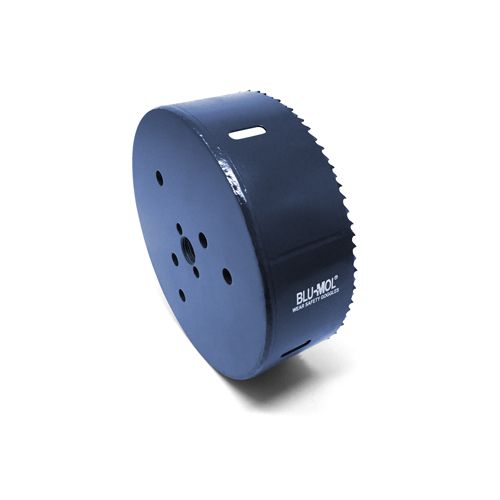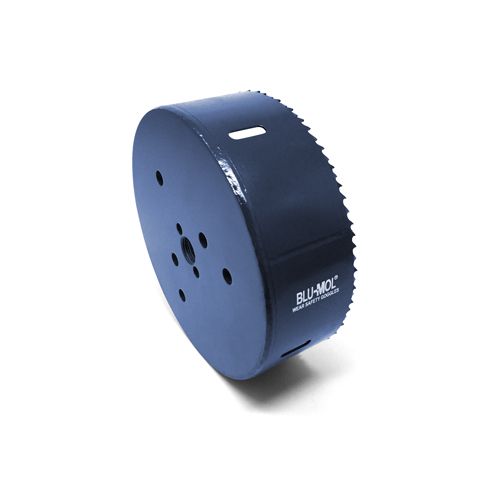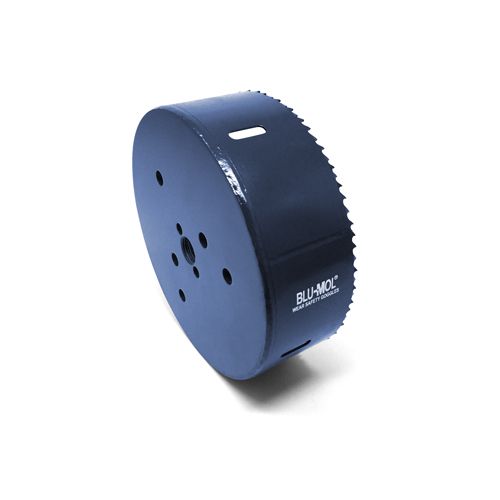FREE SHIPPING ON ORDERS $35+ (Excludes Bulky Items)
Bi-Metal Hole Saw
A bi-metal hole saw is a hole saw that has a cutting edge made of two different types of metal. The cutting edge usually consists of high-speed steel teeth that are welded or brazed to a soft spring steel backing. The high-speed steel teeth provide the durability and sharpness to cut through various materials, while the spring steel backing provides flexibility and shock absorption to prevent the teeth from breaking or shattering.
A bi-metal hole saw is a versatile and common type of hole saw that can be used for drilling holes in wood, metal, plastic, and other materials. It can cut faster and smoother than other types of hole saws because it has variable-pitched teeth that reduce vibration and heat. It can also last longer than other types of hole saws because it has a high percentage of cobalt content that helps maintain the hardness and sharpness of the teeth at high temperatures.
A bi-metal hole saw can be attached to a drill or an arbor with the appropriate adapter. It can be sharpened with a file or a grinder when it becomes dull. It can be used with or without a pilot bit, depending on the preference and needs of the user.
- Standard bi-metal hole saws: These are the most basic and widely used type of bi-metal hole saws. They have high-speed steel teeth that are welded or brazed to a spring steel backing. They can cut through wood, plastic, metal, and other materials with various thicknesses and harnesses.
- Variable pitch bi-metal hole saws: These are a variation of standard bi-metal hole saws that have variable pitched teeth that reduce vibration and heat. They can cut faster and smoother than standard bi-metal hole saws. They are suitable for cutting thin and hard materials such as stainless steel.
- Deep cut bi-metal hole saws: These are a variation of standard bi-metal hole saws that have a deeper saw design that allows for cutting 2-by dimensional lumber in one pass. They can also cut thicker and softer materials such as wood and plastic23.
- Carbide tipped bi-metal hole saws: These are a variation of standard bi-metal hole saws that have carbide tips brazed to the high-speed steel teeth. They can last longer and cut harder than standard bi-metal hole saws. They are suitable for cutting abrasive and tough materials such as cast iron, ceramic, and fiberglass12.
- Diamond grit bi-metal hole saws: These are a variation of standard bi-metal hole saws that have diamond grit coated on the cutting edge of the blade. They can last longer and cut smoother than standard bi-metal hole saws. They are suitable for cutting glass, tile, marble, slate, and other hard materials14.
- Choose a bi-metal hole saw that matches the size and shape of the hole you want to drill. For example, a round hole saw for a round hole, a square hole saw for a square hole, etc.
- Attach the bi-metal hole saw to an arbor or an adapter that fits your drill or angle grinder. Make sure the tool is securely fastened and has enough power and speed to cut through the material.
- Mark the center and outline of the hole on the surface you want to drill. You can use a pencil, a marker, a template, or a guide jig to make accurate markings
- Start drilling the hole from the center of the mark. Apply moderate pressure and keep the tool steady and perpendicular to the surface. Do not force or tilt the tool as this may damage the blade or the material.
- Use water or coolant to lubricate and cool down the blade and the material. This will prevent overheating, clogging, cracking, and dust formation.
- Drill until you reach the desired depth or until you cut through the material. Remove the tool and the slug from the hole. Clean the blade and the surface with a cloth or a brush.

